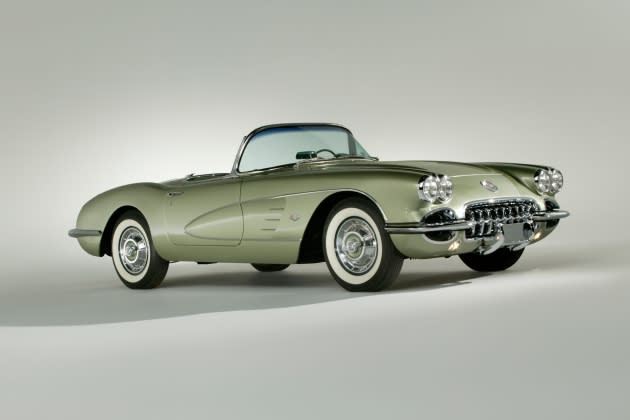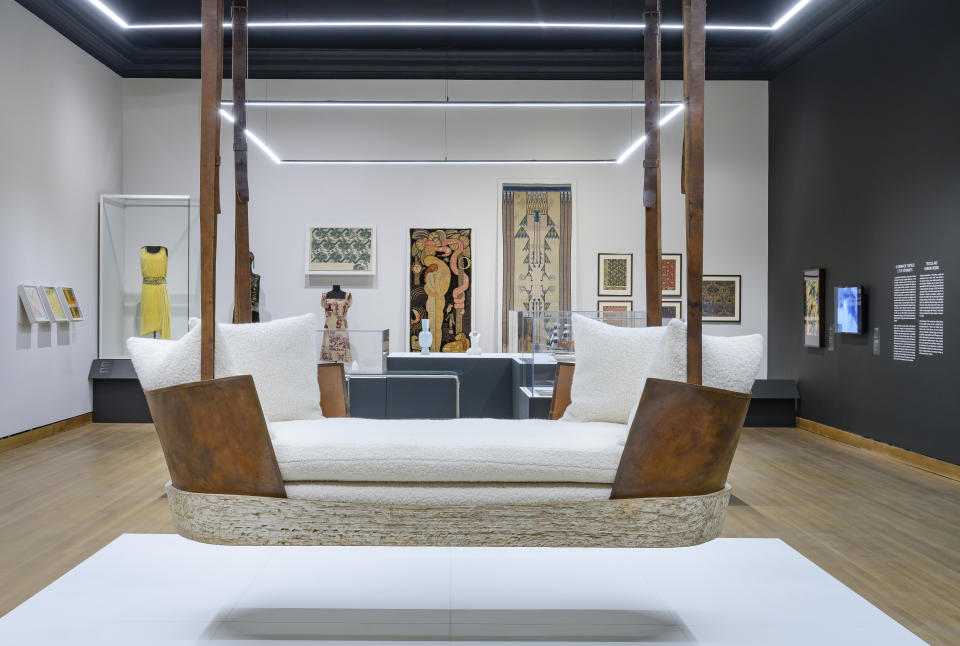‘Parall(elles)’ Tells Story of Women’s Impact on World of Design

TORONTO — Just call it revolutionary.
In spring 2021, the Montreal Museum of Fine Arts made the decision to create “Parall(elles): A History of Women in Design,” a first-of-its-kind exhibition spotlighting the greatest women working in the field in North America over the last 150 years. The exhibition runs until May 28.
More from WWD
During those years many of the persevering talents featured in the show remained largely unknown to mainstream audiences — unlike many of their male counterparts who rose to fame.
“Parall(elles)” aims to set the record straight with an overview that extends from artisanal craftwork to industrial design, including ceramics, glass, metalwork, jewelry, textiles, furniture, consumer products, graphics, fashion and interior design.
“Despite being woefully under-recognized in the decorative arts and design, women have had a huge impact on all aspects of these fields. That understanding is what I want people to come away after seeing this show,” said Mary-Dailey Desmarais, the chief curator of the Montreal Museum of Fine Arts.
Bringing together close to 250 objects loaned from private collections in Canada, the U.S., U.K. and Europe, as well as museums, The Stewart Program for Modern Design, and the MMFA’s own collection, “Parall(elles)” is set against a complex backdrop of social and political issues.
“In the late 19th and early 20th centuries women didn’t have the training that men received,” Desmarais said. “In fact, women who found themselves outside of the home and alone in the workplace did not seem respected. That all shifted with the start of World War I.”
When the world’s young men went off to war, women were called to the workforce to ease labor shortages, filling in for male bank clerks, chauffeurs, streetcar conductors, locomotive dispatchers and much more. “The same thing happened in World War II,” said Desmarais.
“Women got into industrial design and received more formal training. But then came the 1950s and society saw a backlash against women in the workforce who were seen as taking jobs away from men returning from the war. All these factors contributed to women being completely underrated in the field of design,” she said.
Yet female talents persevered, as audiences will see in this exhibit’s beautiful vases from the Arts and Crafts movement; a tubular chrome-plated steel desk by Jeannette Meunier Biéler, a rare example of Bauhaus’ influence on Canadian design, and an assortment of jewelry and evening gowns that attest to the breakthrough of women into the fashion and jewelry-making industries during the interwar period.

“Parall(elles)” also showcases a unique prototype for the Fancy Free Corvette designed by Ruth Glennie for General Motors in 1958.
“The Fancy Free Corvette has been seen in auto shows before, including its unveiling in 1958. But this will be the first time that the Corvette will be shown in a museum setting,” said Desmarais.
Indeed, as the exhibition reveals, rising consumer demand in the ’50s motivated some manufacturing companies to employ female designers in the hopes of increasing sales to women.
One such company was General Motors.
GM’s research in the mid-’50s indicated that women influenced 70 percent of automobile purchases. Armed with that knowledge, the company hired a group of women to work as designers in its interior design department. Glennie was one of these “Damsels of Design” as they were dubbed, and appeared alongside them at GM’s Feminine Auto Show of 1958, where her silver-olive colored Corvette — the first to feature retractable seatbelts — debuted, bearing other Glennie touches such as interchangeable interior treatments, contoured seat and ample storage space.
Indeed, throughout the Montreal exhibition, female innovation stands out in everything from the ’50s Spindle wall clock by Lucia DeRespinis to the works of more contemporary talents like Judy Chicago, Faith Ringgold, Joyce J. Scott and Cindy Sherman, to name a few.
The show also highlights ground-breaking Quebec and Canadian artists and designers such as Lani Adeoye, Zoë Mowat, Natasha Thorpe and others, while addressing the shift toward sustainable development, slow design, additive manufacturing, and new technologies, from robotics to 3D printing.

“Parall(elles”) outlines the inequities women have faced over the last 150 years, especially with husband-and-wife design teams.
For example, in 1946 Eliot Noyes, the head of the industrial design department at the Museum of Modern Art from 1939 to 1946, invited industrial designers Charles and Ray Eames to show their furniture at the museum. The result was presented as the MoMA’s first “one-man” furniture exhibition titled “New Furniture Designed by Charles Eames.”
Several months later Noyes published a glowing article in Arts & Architecture, writing that “Charles Eames has designed and produced the most important group of furniture ever produced in this country.”
The gifted Ray Eames, however, is never mentioned as a designer or collaborator but only as Charles’ “wife and helper.”
As Desmarais said, “These are patriarchal, societal norms that have taken too long to be called into question. But here, in the midst of all these daring, beautiful works in ‘Parall(elles),’ the message is clear: Give women in design the respect they deserve.”
Best of WWD


